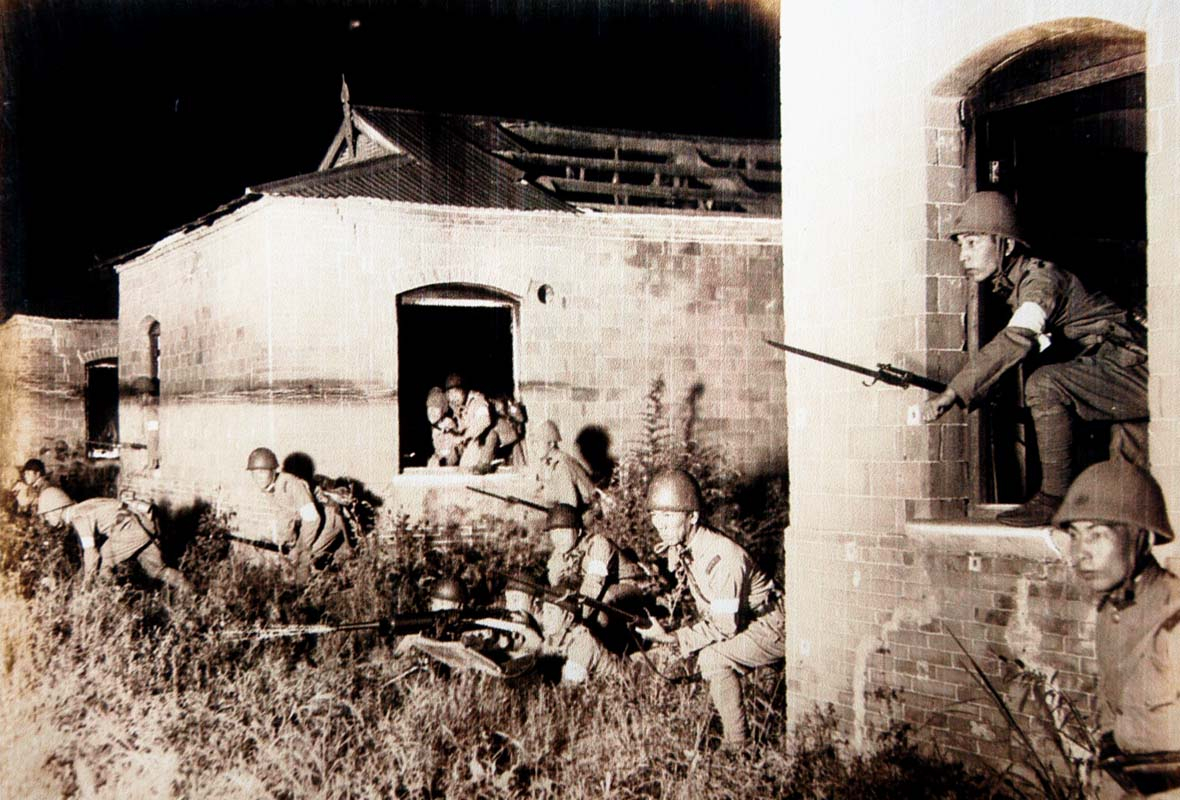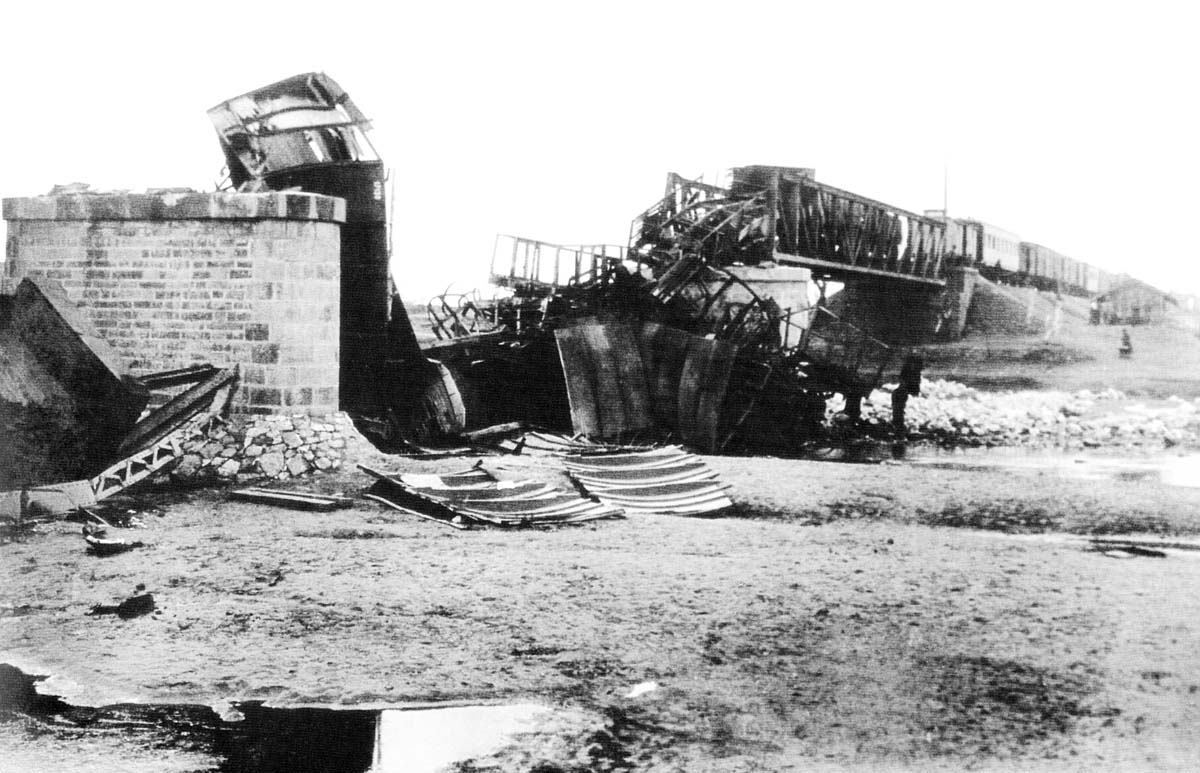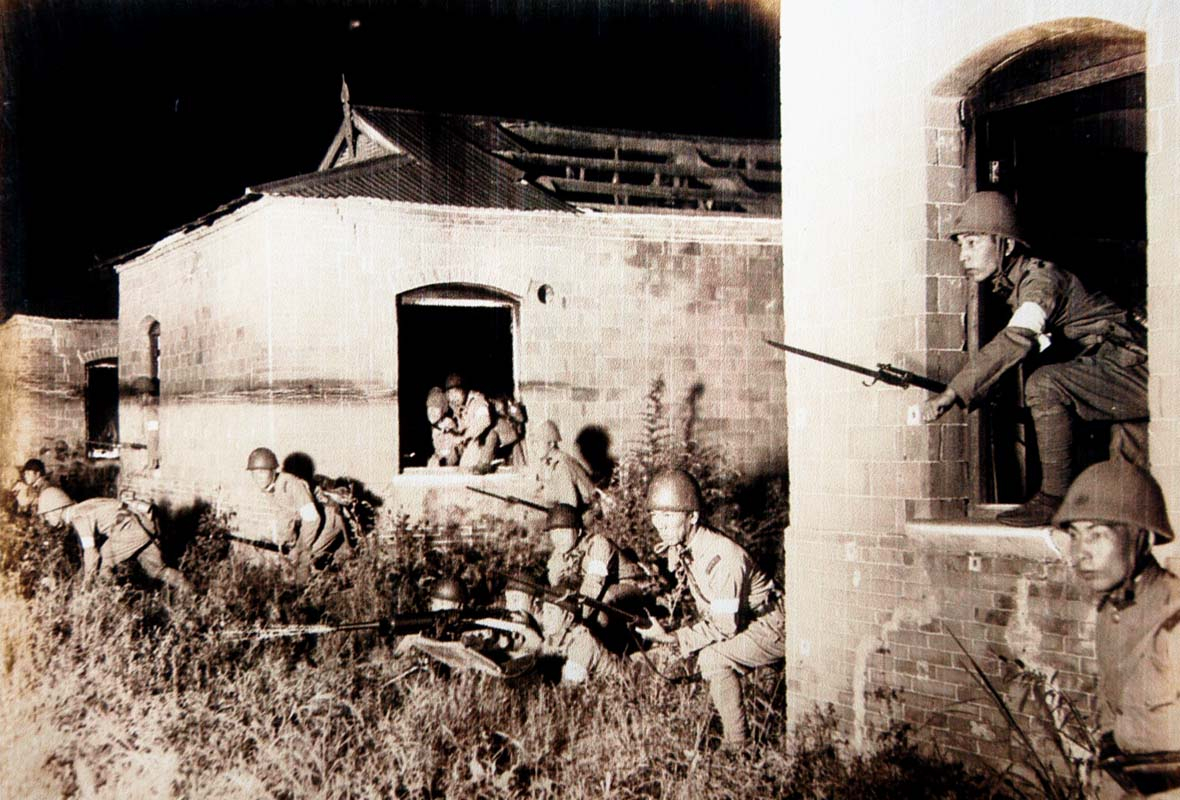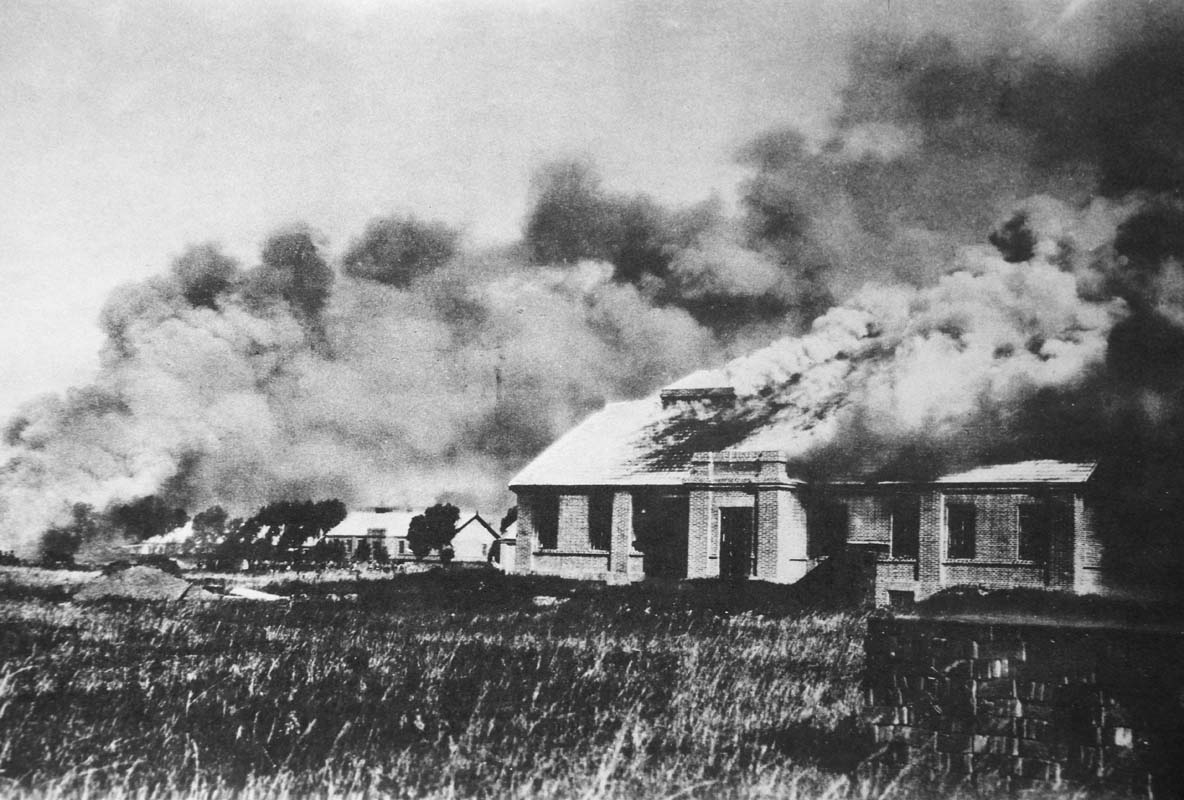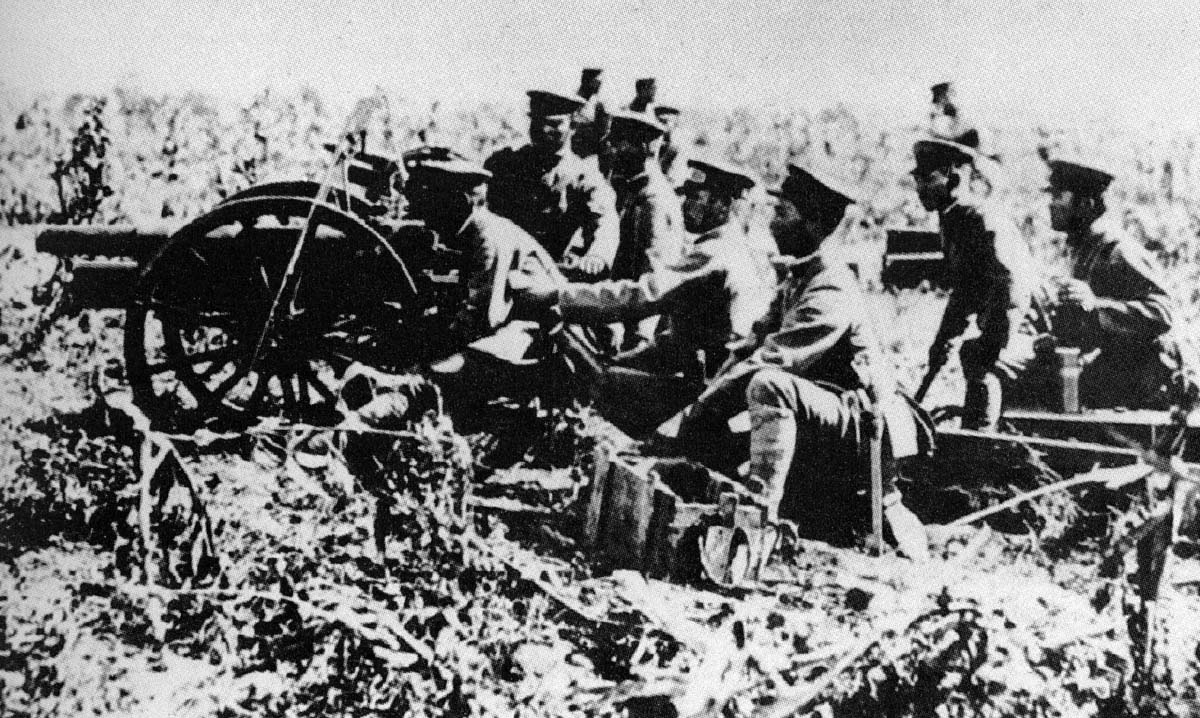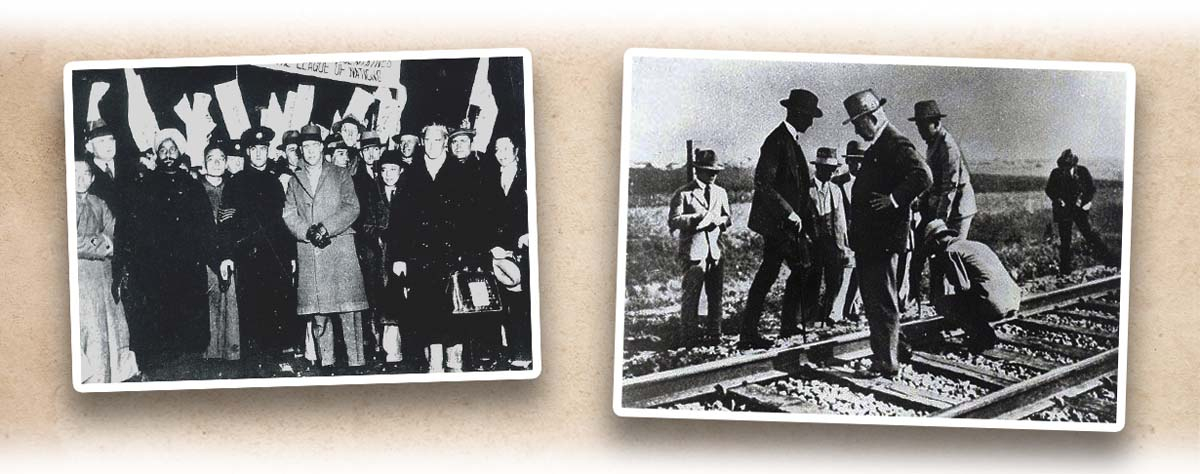After the Meiji Restoration, Japan made foreign expansion a fundamental national policy, with the main objective of conquering China via Korea. Following the First Sino-Japanese War, the occupation of Korea, and the encroachment upon Shandong Province (山東), Japan formulated its Continental Policy for invading China, planning to implement it after China’s Northern Expedition (北伐).
On the night of 18 September 1931, Japan’s railway Garrison Unit blew up a section of the South Manchuria Railway (南滿鐵路) near Liutiao Lake (柳條湖) of Shenyang (瀋陽, or formerly known as Mukden). The explosion was a ruse orchestrated by Japan’s Kwantung Army to lay the blame on the Chinese forces. Using this incident as a pretext, the Japanese army attacked Shenyang, in what would later become known as the September 18th Incident (or the Mukden Incident, the Manchurian Incident, and the Liutiao Lake Incident). At that time, more than 30,000 soldiers of the Japanese army stationed in Northeast China, while the number of Chinese soldiers was approximately 160,000. However, the latter were ordered to put up no resistance. Therefore, the Japanese army was able to occupy Shenyang the next day, and later attacked other areas in Liaoning Province (遼寧) and its surrounding provinces. By the end of 1931, the whole Northeast China fell.
The League of Nations was established following World War I. After the September 18th Incident, it dispatched a commission to Northeast China. The commission published the Lytton Report in October 1932, showing sympathy towards China and reproaching upon Japan. Extremely dissatisfied with this report, Japan withdrew from the League of Nations. The September 18th Incident sparked off the Japanese occupation of Northeast China and the resistance against Japanese aggression by soldiers and civilians there. It was regarded as the beginning of the Fourteen-year War of Resistance Against Japanese Aggression and the prelude to World War II in the eastern battlefield.
|
|
The common phrase for the war of resistance against Japanese aggression during the Republican period is “Eight-year War of Resistance Against Japanese Aggression”. Why is the term “Fourteen-year War of Resistance Against Japanese Aggression” also used? |
|
|
See answer below. |
The main plotters of the September 18th Incident. From the left: Shigeru Honjō, the Commander-in-chief of the Kwantung Army, Itagaki Seishiro, the senior staff officer of the Kwantung Army, and Doihara Kenji, the chief of the Mukden Special Service Organ. On the Chinese side, Zhang Xueliang (張學良), the effective ruler of Northeast China, was in Beiping (北平) at the time of the incident.
At 11:15pm on 18 September 1931, Japan’s Kwantung Army deliberately blew up a section of the South Manchuria Railway near Liutiao Lake on the northern outskirts of Shenyang, and then accused the Chinese army of sabotaging the railway and attacking the Japanese Garrison Unit. The Kwantung Army used the explosion as a pretext to attack the Chinese army.
Japan’s Kwantung Army attacking the Chinese garrison of Beidaying (北大營) in Shenyang shortly after the explosion at Liutiao Lake.
The barracks of the Northeast Army were bombed and burned by the Japanese army. Although Zhang Xueliang’s Northeast Army outnumbered the Japanese army, the former was far inferior in terms of equipment and training. Coupled with the “non-resistance” order the Chinese side had to follow, the Japanese army’s rapid advancement was resulted.
On the early morning of 19 September 1931, the Japanese army occupied Shenyang, the capital of Fengtian Province (奉天) and then the whole province.
On 19 September 1931, the headquarters of Japan’s Kwantung Army was moved from Lushun (旅順) to Shenyang.
On 19 September 1931, the Japanese army invaded Changchun (長春), the capital of Jilin Province (吉林). After bombing the Northeast Army’s garrison, they occupied Changchun the next day and controlled the entire Jilin.
On 19 November 1931, the Japanese army occupied Qiqihar (齊齊哈爾), the capital of Heilongjiang Province (黑龍江). At this point, the three northeastern provinces in China - Fengtian, Jilin, and Heilongjiang - all fell.
Left: Ma Zhanshan (馬占山), a Chinese fighter who resisted the Japanese army in Northeast China. Right: anti-Japanese armed forces formed by the people in Northeast China. During the Japanese invasion in Northeast China, most of the Northeast Army’s troops followed the order to retreat, but many soldiers and civilians in Northeast China still insisted on resisting. Among them, Ma’s troops even crashed the Japanese army before eventually being defeated due to the gap in strength.
After the September 18th Incident, Ma Zhanshan served as acting Chairman of the Heilongjiang Provincial Government and deputy Commander of the Northeast China Border Defence Force in Heilongjiang Province. He led his troops to fight against the Japanese army and once crashed them before eventually being defeated. In February 1932, he pretended to surrender to the Japanese army, but fought again in April of the same year. After the outbreak of total resistance against Japanese aggression in 1937, Ma and his troops fought against the Japanese army until China’s final victory.
After the September 18th Incident, the League of Nations sent a commission headed by Victor Alexander George Robert Bulwer-Lytton, 2nd Earl of Lytton, to Northeast China. In October 1932, the League of Nations published an investigation report accusing Japan of aggression. Dissatisfied with this report, Japan withdrew from the League of Nations. Left: the Lytton Commission members in China (Lord Lytton is the man wearing a coat in the centre of the photo). Right: the Lytton Commission investigating in Northeast China.
Generally regarded as the predecessor of the United Nations, the League of Nations (1920-46) was an international organisation established after World War I to arbitrate international disputes and maintain world peace. The Lytton Report released in October 1932 stated that Japan was the obvious aggressor. It also stated that the three northeastern provinces were an integral part of China, which was a generally acknowledged fact between China and the international community, and the military operations of the Japanese in Manchuria could not be regarded as measures of legitimate self-defence. However, Japan ignored the report, continued to occupy Northeast China, and withdrew from the League of Nations. The League of Nations, however, could do nothing about it. Many Chinese and foreign historians believe that Japan’s actions undermined the prestige of the League of Nations and instigated future aggression by Germany and Italy, ultimately becoming one of the factors that triggered World War II.
|
|
The common phrase for the war of resistance against Japanese aggression during the Republican period is “Eight-year War of Resistance Against Japanese Aggression”. Why is the term “Fourteen-year War of Resistance Against Japanese Aggression” also used? |
|
|
The War of Resistance Against Japanese Aggression, or the “War of Resistance”, in modern China is customarily referred to as the “Eight-year War of Resistance Against Japanese Aggression” (1937-45). However, Japan’s armed invasion of China in modern times began before the July 7th Incident in 1937. Although the Nationalist Government ordered the Chinese army not to resist the Japanese invasion after the September 18th Incident, the soldiers and civilians in Northeast China insisted on fighting against the enemy since 1931. For example, Wang Tiehan (王鐵漢), a general of the National Revolutionary Army, disobeyed his superiors’ order of “non-resistance” and confronted the Japanese army during the September 18th Incident. Ma Zhanshan once defeated the Japanese army in Heilongjiang. Later, Zhao Shangzhi (趙尚志), Yang Jingyu (楊靖宇), Li Zhaolin (李兆麟), Zhao Yiman (趙一曼), and other patriots all participated in the War of Resistance Against Japanese Aggression in Northeast China. In fact, since 1931, Chinese soldiers and civilians had been fighting against the Japanese invasion in many parts of China, such as the Battle of Shanghai (上海抗戰) during the January 28th Incident in 1932 and the Defence of the Great Wall (長城抗戰) in 1933. Even after the July 7th Incident in 1937, the Nationalist Government did not formally declare war against Japan and only issued the Proclamation of Self-Defence and War of Resistance (《自衛抗戰聲明書》). It was not until the outbreak of the Pacific War at the end of 1941 that the Nationalist Government officially declared war. Therefore, the “Eight-year War of Resistance Against Japanese Aggression” refers to China’s total resistance against Japanese aggression, while the “Fourteen-year War of Resistance Against Japanese Aggression” (1931-45) refers to the beginning of Japanese invasion and Chinese resistance marked by the September 18th Incident. |
Source of most photos used in this feature piece: Fotoe.




